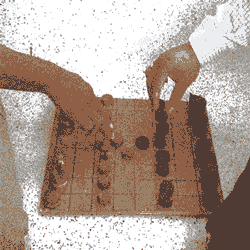Thai Tradition, History and Honor
by Lauren
(Timmins, Ontario, Canada)
Makruk is an ancient game from which contemporary chess is derived. It is similar to the most ancient form of chess, Chaturanga, which was developed in India. The game is played widely in Thailand, and Cambodia with similar rules, called Ouk Chatrang. Makruk is the most widely played game in the world today, with an estimated two million players in Thailand alone. It is said that Makruk is more challenging than international chess, simply because the pawns start at a different position on the board.
The game has changed little since its inception over a thousand years ago. Makruk is still played on street corners and in shops, with sets made of shells and bottle caps or intricately carved wood or stone pieces. While international chess can be heated, and different strategies are constantly developed and debated, Makruk is made more challenging by simple rules which bind the players in the honor of a tied game.
Makruk has many of the same pieces as international chess, and the pieces move in much the same way, but the game varies in rules. In Makruk, various scenarios enable the players to enact the rule of the draw, where the game is then limited to a set number of turns in which the players must win, or the game is tied. It is this simple choice to end the game with a draw, where both players essentially retain the honor afforded to them by playing the game. The Makruk board levels the playing field. Princes, shopkeepers and beggars are all bound by the rules of the game and the honor afforded the winner. These values are reflected in the Thai culture and are part of what makes Thailand such a well loved country for residents, tourists, scholars and students alike.









